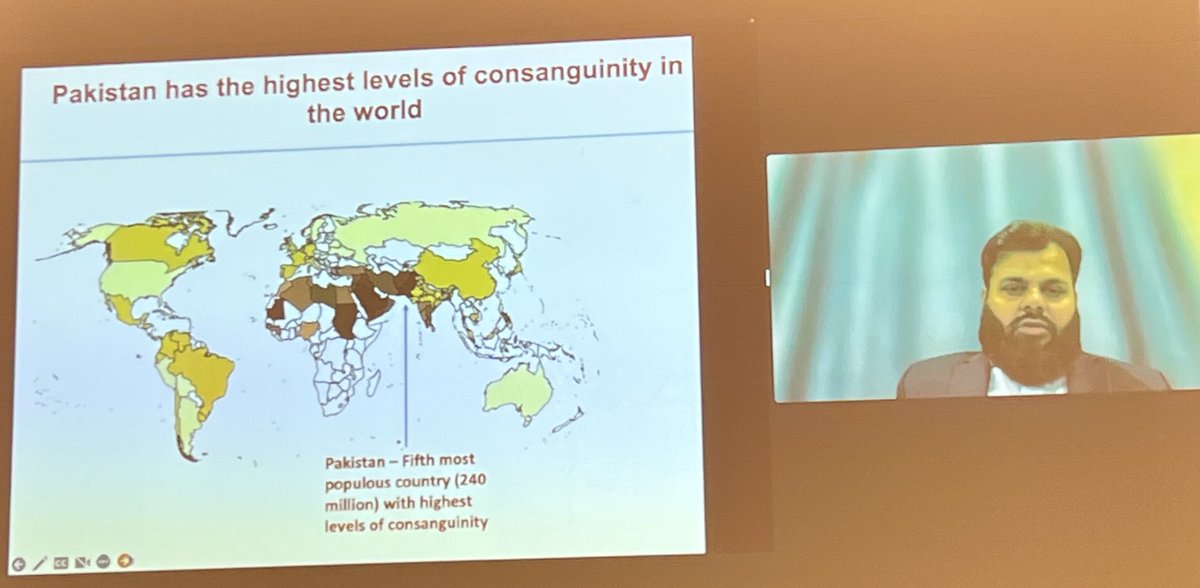
One thing that stood out for me at the #ASHG22 is that now there is more emphasis being given to genetic diversity in the context of ancestry and its impact on human health. 🧵
It is often considered taboo to talk about phenotypic differences across genetic ancestries. While it is true that many of these differences are environmental in origin, there is sometimes a genetic component as well.
Irrespective of their origins, the fact that there are phenotypic differences (especially in terms of disease risks) between genetically defined groups requires attention. This knowledge can help doctors and scientists improve the quality of health care.
I've listened to some great presentations at #ASHG22 on the importance of understanding the fine scale ancestries in the hospital-based biobanks and their impact on health.
@ChristaCaggiano presented (twice) on the fascinating genetic diversity seen in individuals enrolled in the UCLA health system. Using identify by descent (IBD) based clustering, Christa identified 376 genetic clusters among 40k UCLA patients. 

Many of these IBD clusters capture communities that have been poorly studied in the field, e.g., Lebanese Christians, Iranian Jews, Armenians, and Gujaratis. We know little about these communities in terms of their disease susceptibilities.
Christa showed us that there are striking health differences across these communities. Some of them captured known ancestry-specific disease burdens, e.g., ulcerative colitis in Ashkenazi Jews, sickle cell disease in African Americans, and viral hepatitis B in Asians.
And some of them are novel (or not well known), e.g. goiter in Iranian Jews, bacterial enteritis in Egyptian Christians, bronchus cancer in Koreans etc.
Note that these differences do not always represent genetic susceptibilities. Christa highlighted an example where they observed an increased prevalence of depression in Ashkenazi Jews that could be partly (or fully) a consequence of anti-semitism.
Christa et al. were able to capture the allele frequency differences of some well-known pathogenic alleles that are known to be enriched in specific ancestries. e.g., HBB variants in African Americans, MEFV variants in Armenians.
They also found some striking enrichment of pathogenic alleles that are not routinely screened for in specific ancestries, e.g. the GNE variant, a founder mutation, in Iranian Jews, which is contributing to the higher prevalence of myopathies in this community.
For more on Christa's talk, refer to this beautiful preprint and also the website they created to explore these results: ibd.la
medrxiv.org/content/10.110…
medrxiv.org/content/10.110…
A similar line of work is also being done at the Mt Sinai BioMe biobank. @GillianBelbin gave a fantastic talk on her recent work published in AJHG that I have highlighted in the past.
https://twitter.com/doctorveera/status/1453161554933739522?s=20&t=SlJRGXG36PFM6RB_UMam5A
The major take away from Gillian's talk was that we don't always have to crawl to the depths of the Amazon forests or fly to the remote islands to study founder populations. They might be hiding in plain sight in the very dataset that we analyze day-to-day.
It's important that scientists and doctors are aware of the existence of such populations and the associated burden of certain diseases. Such knowledge is not to discriminate against those communities, but to provide them with the better health care they deserve.
Finally, I need to highlight the talk by Long Lin (Copenhagen Univ) which I found highly fascinating. Kristian described a beautiful within-family study design in admixed individuals to study the causal association between genetic ancestry and health.
Just a few days ago, we saw a beautiful preprint from @kangchenghou et al. that showed we can study genetic differences between ancestries without environmental bias by comparing different ancestral genetic segments of the same admixed individuals.
https://twitter.com/doctorveera/status/1560851246528995328?s=20&t=NgIqeetFTRFsoq1tdv7B3Q
Long Lin's study design employs a similar principle. By comparing phenotypes between admixed siblings who inherit slightly different ancestry proportions from their parents purely by chance (recombination), we can capture the causal effect of a genetic ancestry on a phenotype.
Long Lin et al. studied 4,607 Greenlanders (1339 full siblings) who are admixed with Inuit and European ancestries. Using a within family design, the authors find 9 out of 31 metabolic traits that significantly differ between Inuit and European ancestries.
The strongest differences were seen for body composition, where having a higher Inuit ancestry is associated with lower body weight, waist and hip circumference.
It's really amazing to see that the scientific community embraces the genetic differences among human groups and uses the knowledge to understand human evolution and disease pathophysiology and improve how we diagnose and treat diseases in diverse groups of patients.
• • •
Missing some Tweet in this thread? You can try to
force a refresh









